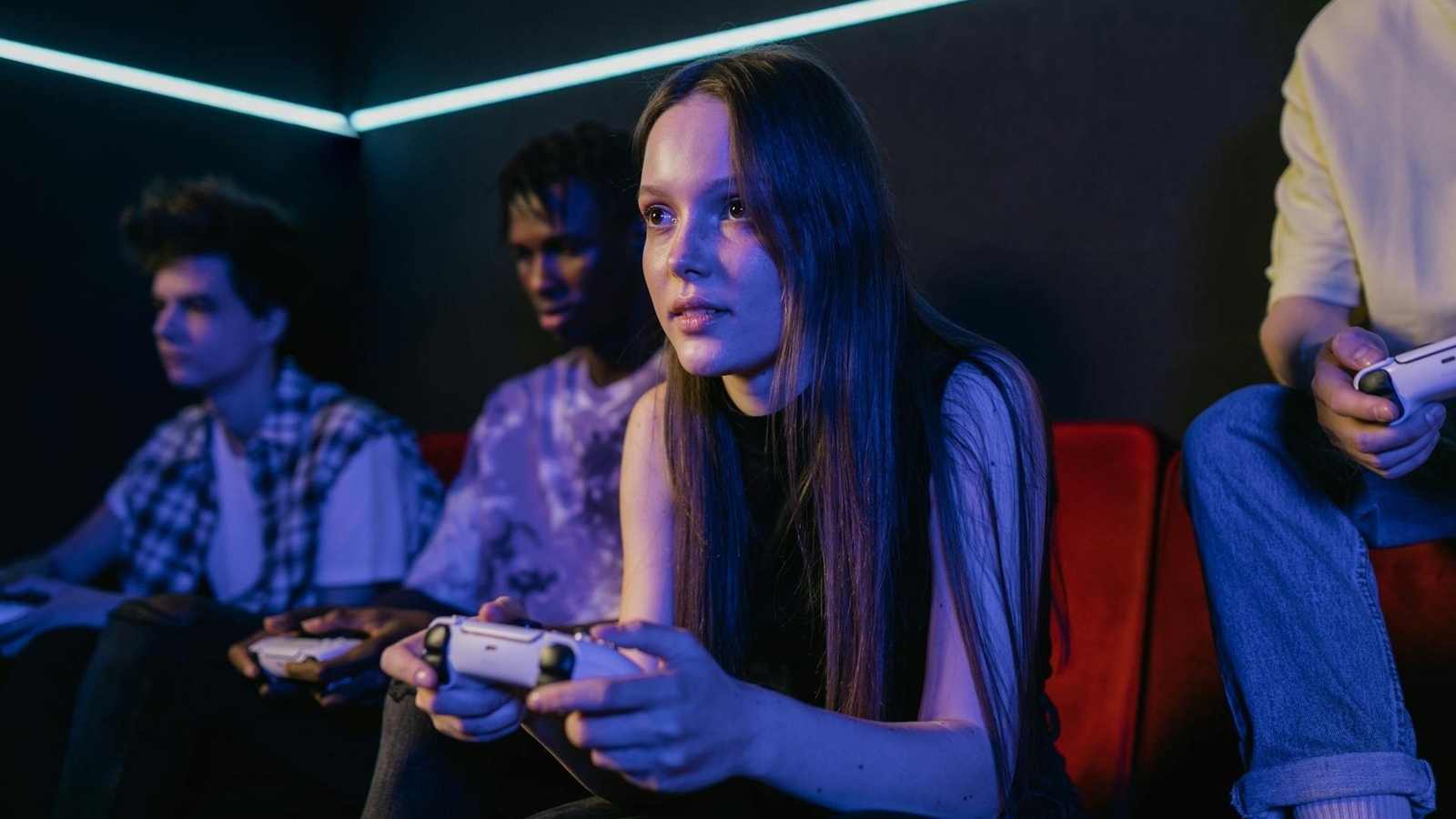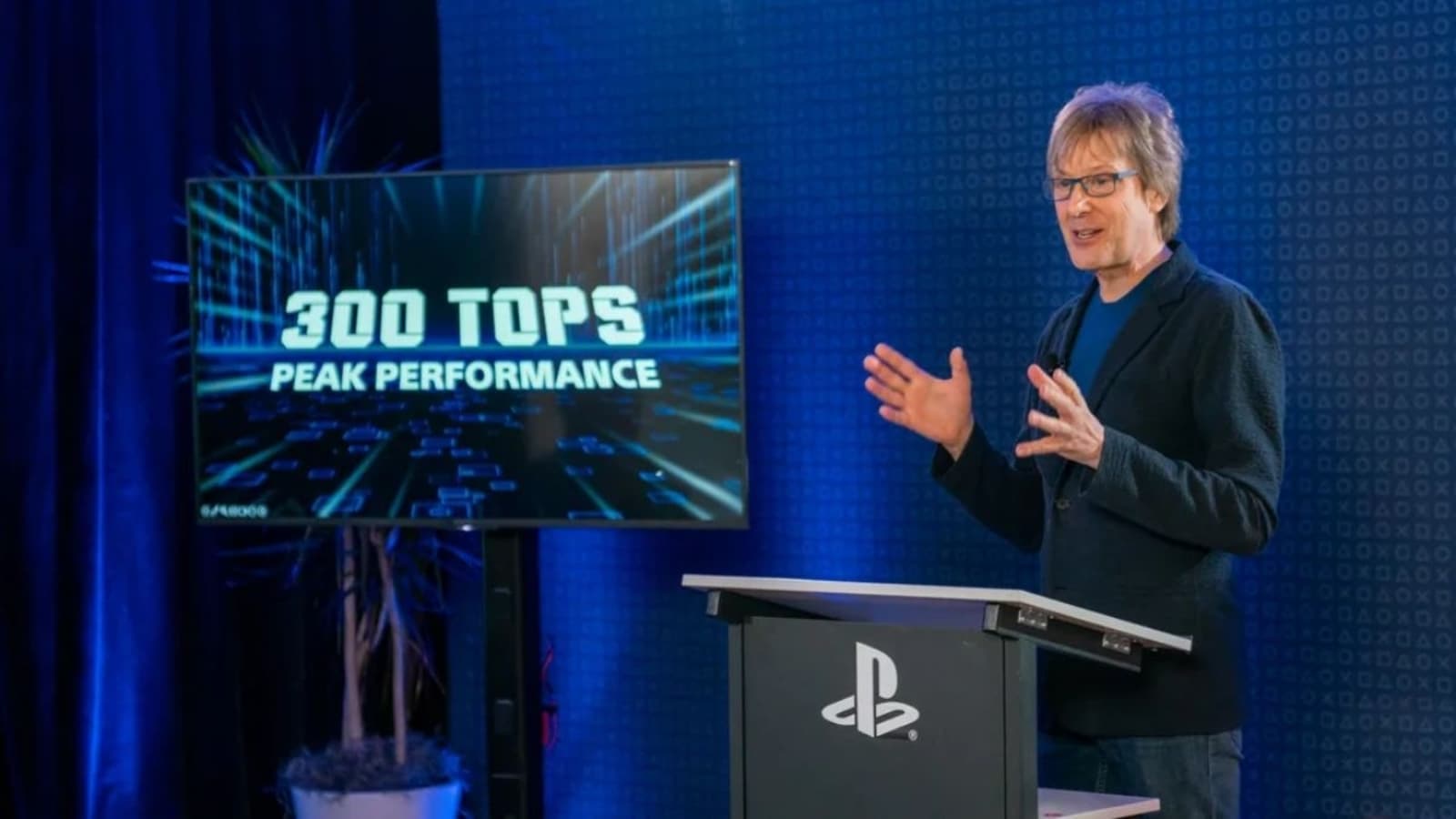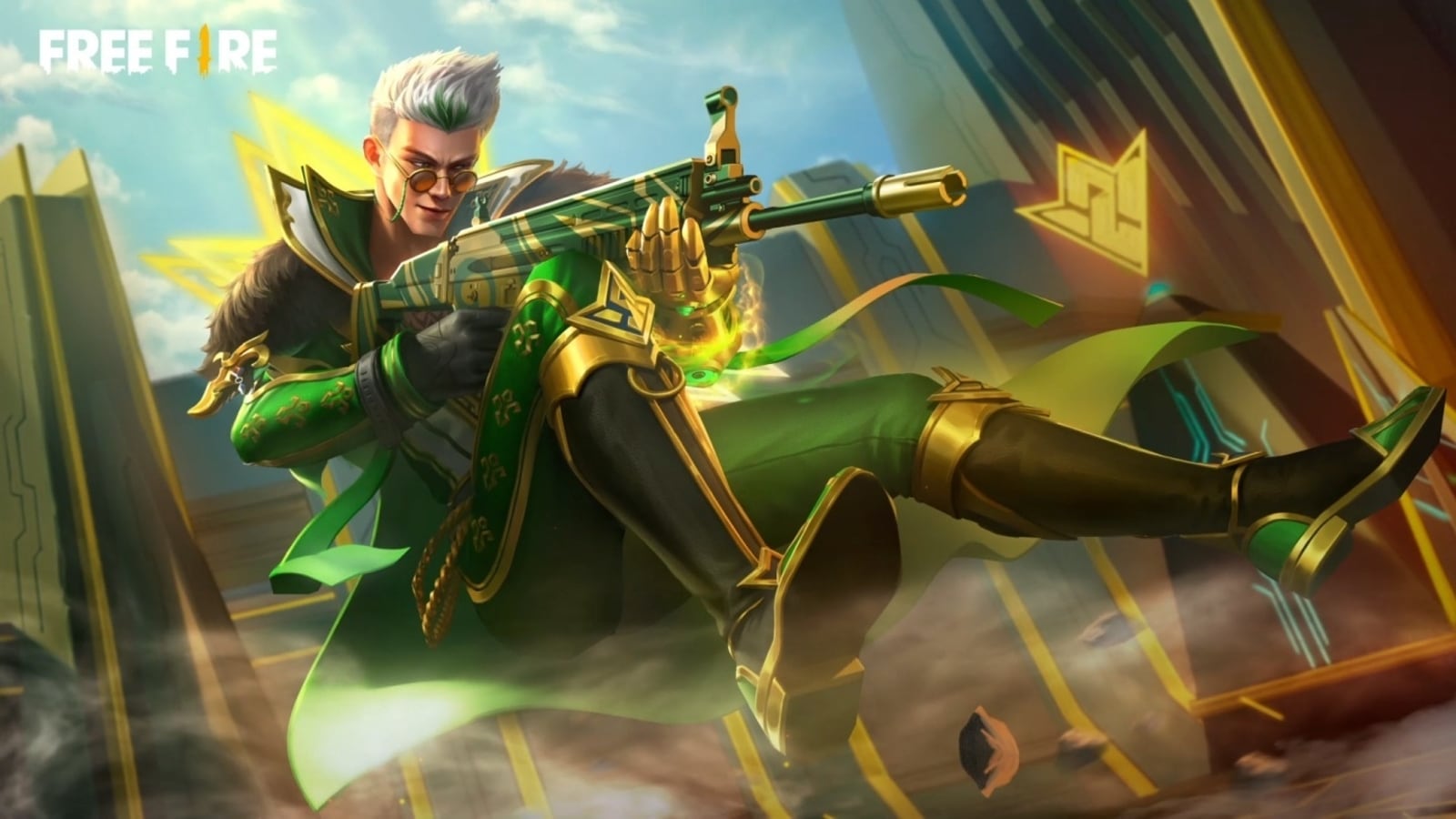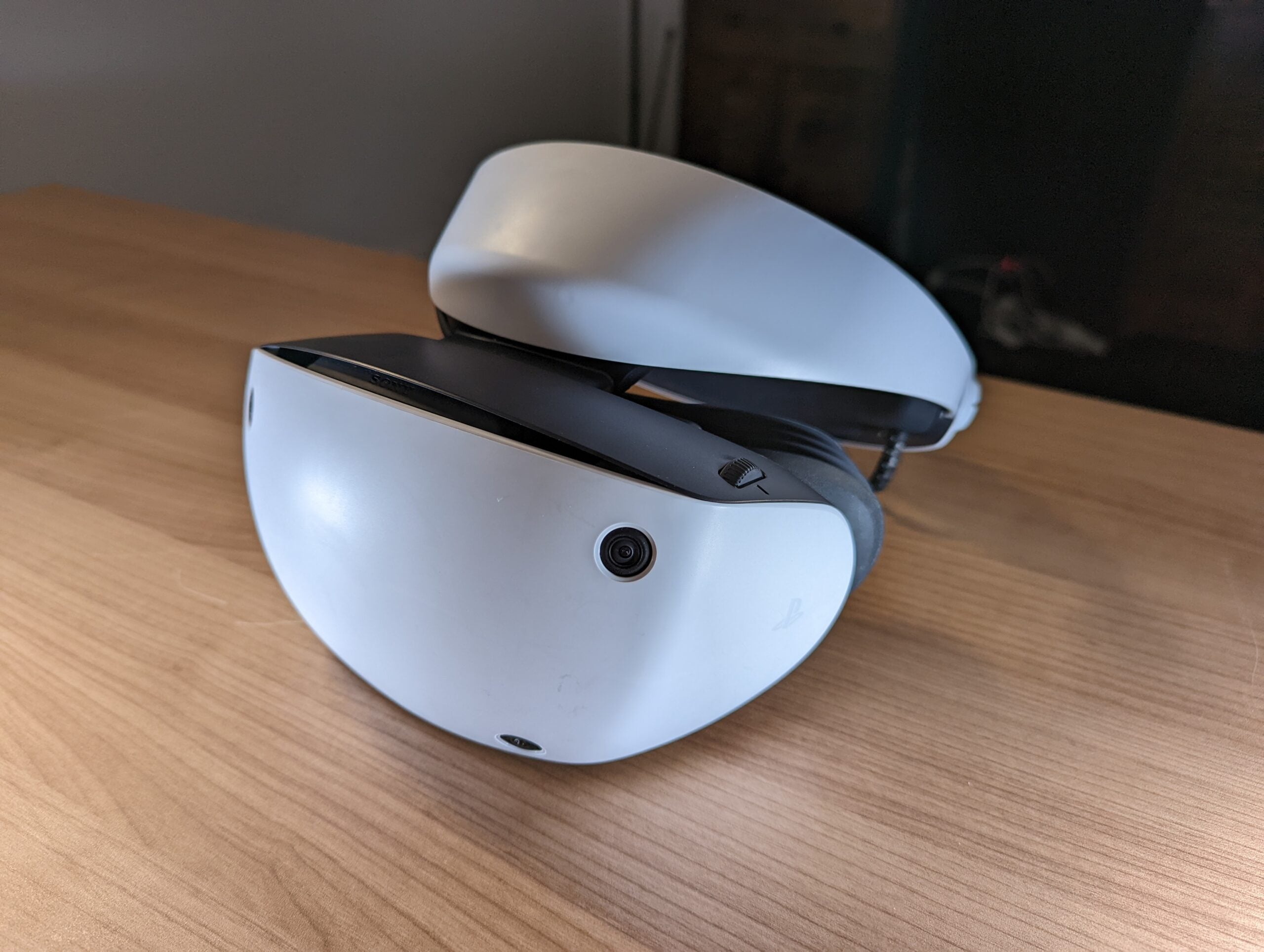Verdict
The PlayStation VR 2 has all the specs required to offer wonderfully immersive experiences, but will depend on future first-party PlayStation games in order to be a worthwhile alternative to the more affordable Meta Quest series.
Pros
- Stunning 4K OLED screen
- Sense controllers are huge improvement
- Stylish design and streamlined setup
- Haptic feedback improves immersion
Cons
- No backwards compatability
- More expensive than a PS5
- Can be uncomfortable after extended use
Availability
- UKRRP: £529.99
- USARRP: $549.99
- EuropeRRP: €600
- CanadaRRP: CA$749.99
- AustraliaRRP: AU$879.95
-
High-resolution OLED display:With an OLED display and 2000 x 2040 per eye resolution, the PSVR 2 offers increidble picture quality. -
New Sense controllers:Ergonomic controllers with motion sensors and haptic feedback. -
Requires a PS5 to function:It can’t run indepedently like the Meta Quest 2 and Pico 4.
Introduction
Virtual reality is going from strength to strength, with Meta continuing to make waves and technology giants such as Apple wading into the market. So it should come as no surprise that Sony has decided to launch its very own: the PlayStation VR 2.
This is actually PlayStation’s second attempt at a VR headset, but this time round its packing cutting-edge technology such a 4K OLED display, haptic feedback and eye-tracking technology.
But there’s also a lot more competition these days. The Meta Quest 3 not only flaunts a fantastic gaming performance, but also allows you to make use of mixed reality for a more versatile offering.
With less lifestyle apps available, Sony will really need to double down on its game catalogue to make the PlayStation VR 2 a success. But are there enough games to make the most of the hardware? After months of testing, here’s my verdict.
Design
- Plenty of adjustment option to find the right fit
- Streamlined setup with USB-C cable
- Inside-out tracking works flawlessly
The PlayStation VR 2 looks really snazzy, with a predominantly white design that matches the PS5’s colour scheme. That does unfortunately mean scuff marks are more visible – I already have one at the front of the visor – but there’s no denying this is one of the best looking VR headsets yet.
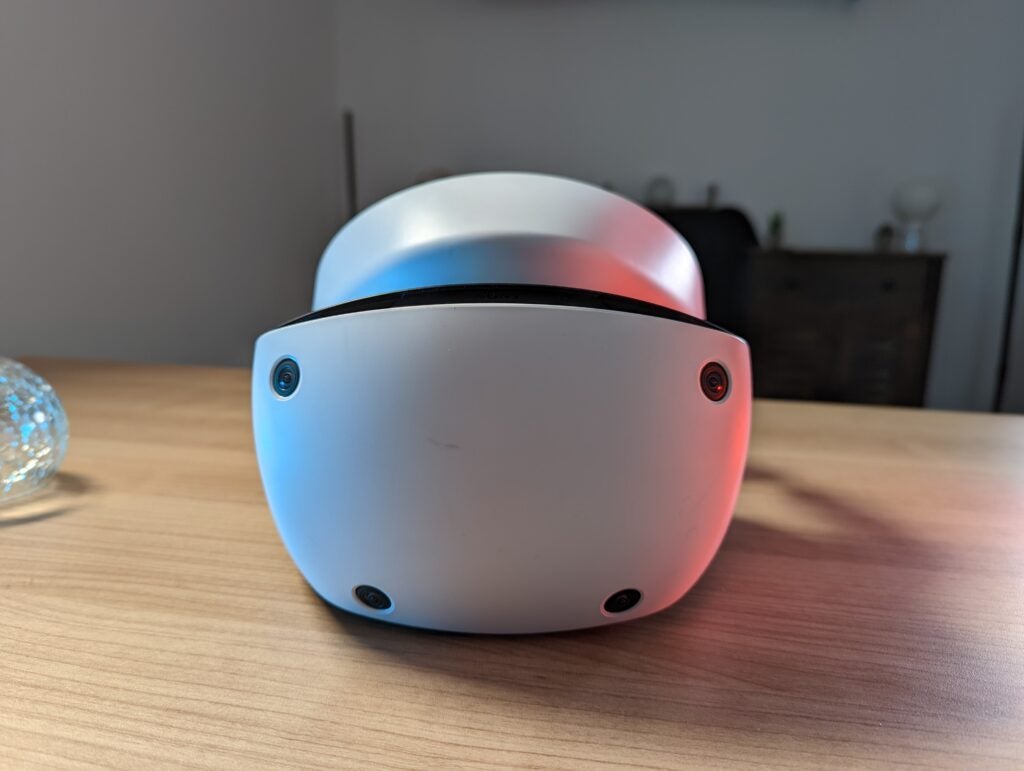
There are a few small details I really love too, with shiny PlayStation logos found on the sides, and the triangle, circle, X and square symbols hidden on top of the visor.
A lot of care has gone into the design of this headset, making it feel like a luxury device that merits the steep price.
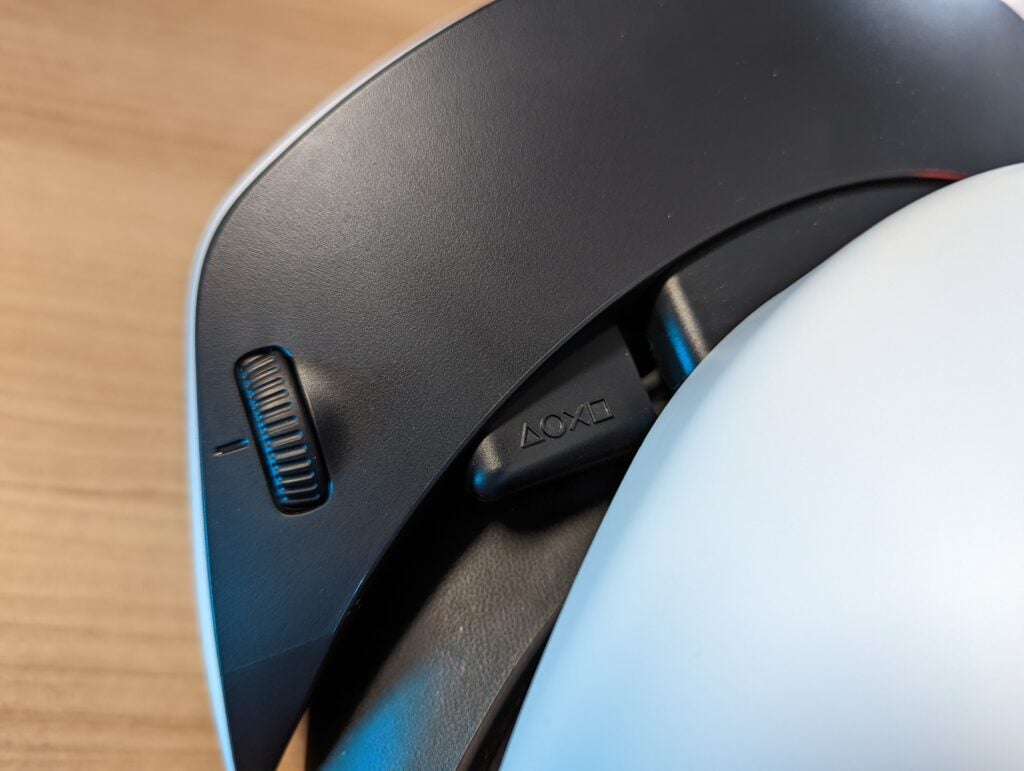
The PlayStation VR 2 features a halo design, with a plastic band snuggly wrapping around my head.
The headband is padded, but it’s not quite thick enough to prevent the plastic band from digging into my forehead after extended play. That said, I still think it’s a better design than the straps on the Meta Quest 2, which can slip out of place fairly easily.
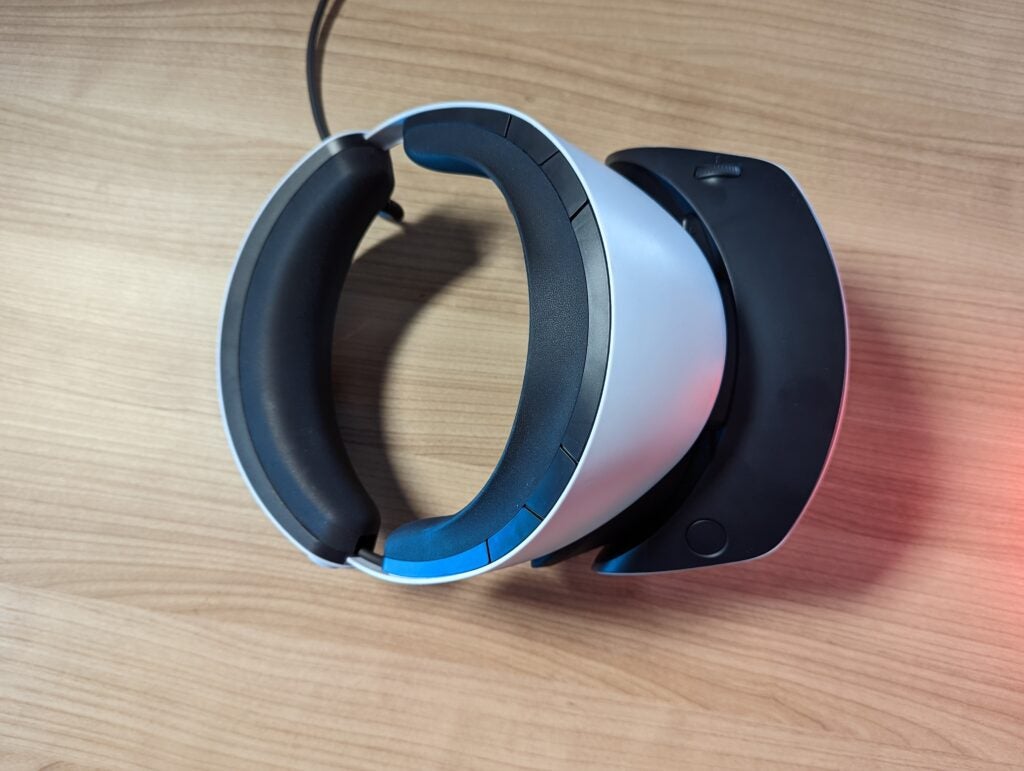
I also found the tight clamp of the PlayStation VR 2 to become uncomfortable after an hour or so of play. I struggled to play for longer than this without taking short breaks, although I assume most people would struggle to be immersed in virtual reality for that long anyway.
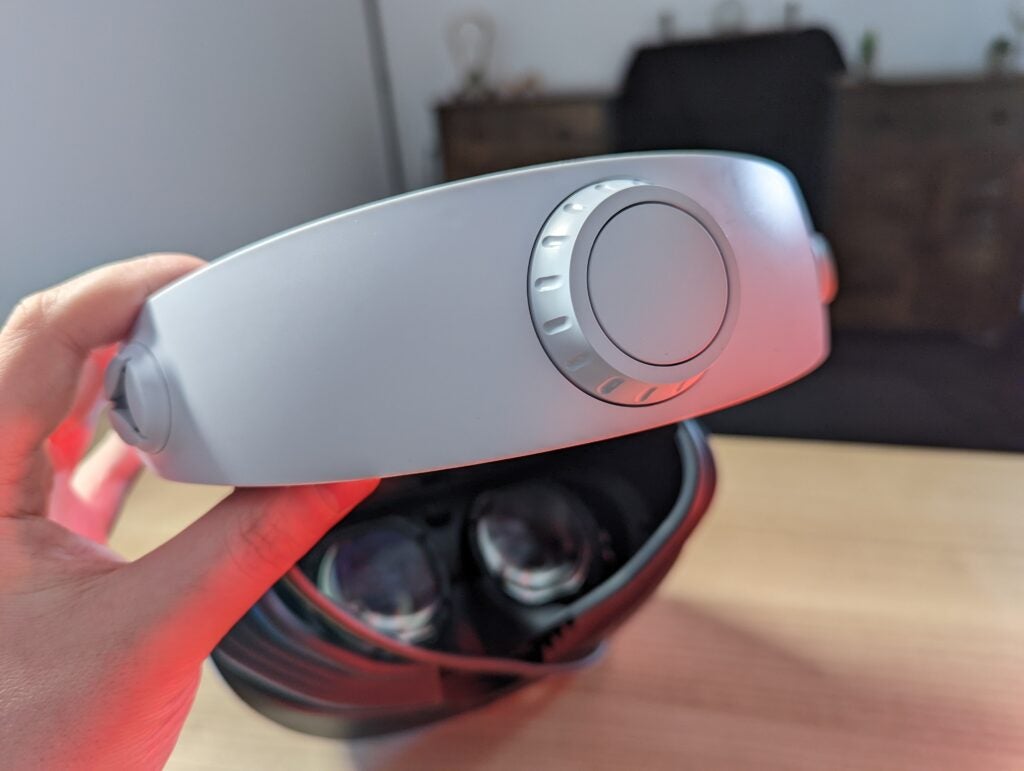
You can at least adjust the tightness of the headband by rotating a dial at the rear, as well as moving the front visor forward or backwards, which will be a blessing for those who wear glasses.
You can also adjust the separation of the lenses with an easy-to-reach scroll wheel. It’s great to see Sony providing so many options so you can configure the perfect fit.
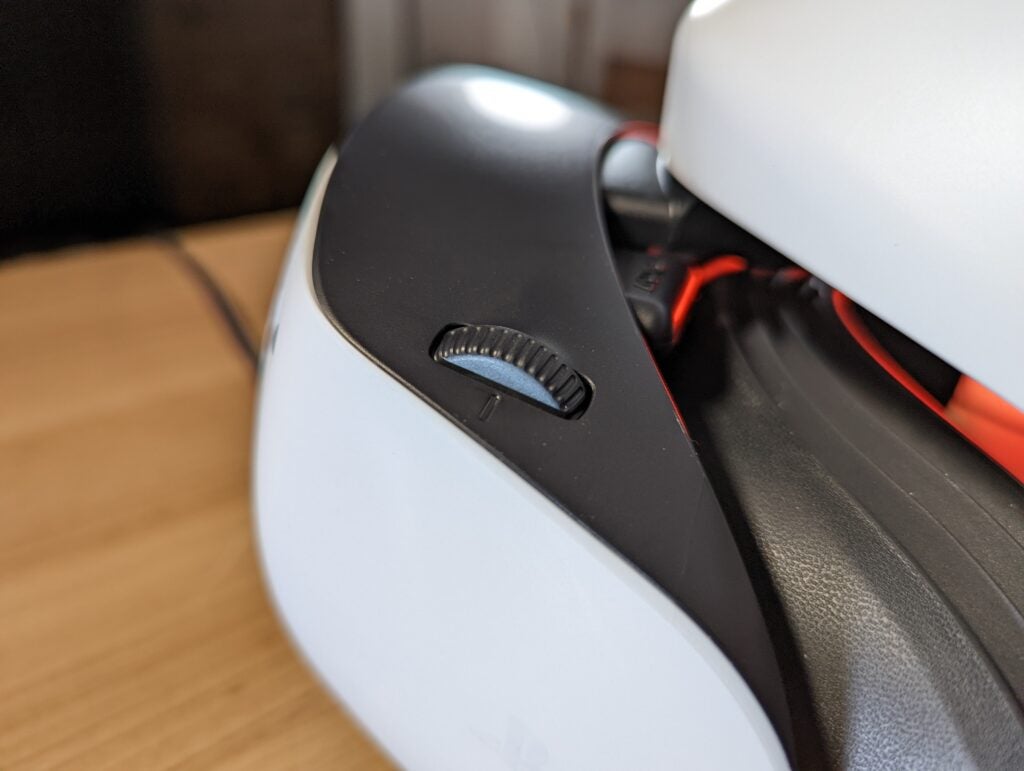
The PSVR 2 only requires a single USB-C to plug into the PS5. That means you’re able to start playing immediately, as long as you’ve already finished the eye-tracking setup and created your designated playing space.
But that single cable can still get in the way. I tripped over it a number of times during play, making me pine for more wireless freedom afforded by the Meta Quest 3 and Pico 4. Being tethered to the PS5 also made it more difficult to find a suitable play space for VR, even with the generous 4.5m cable.
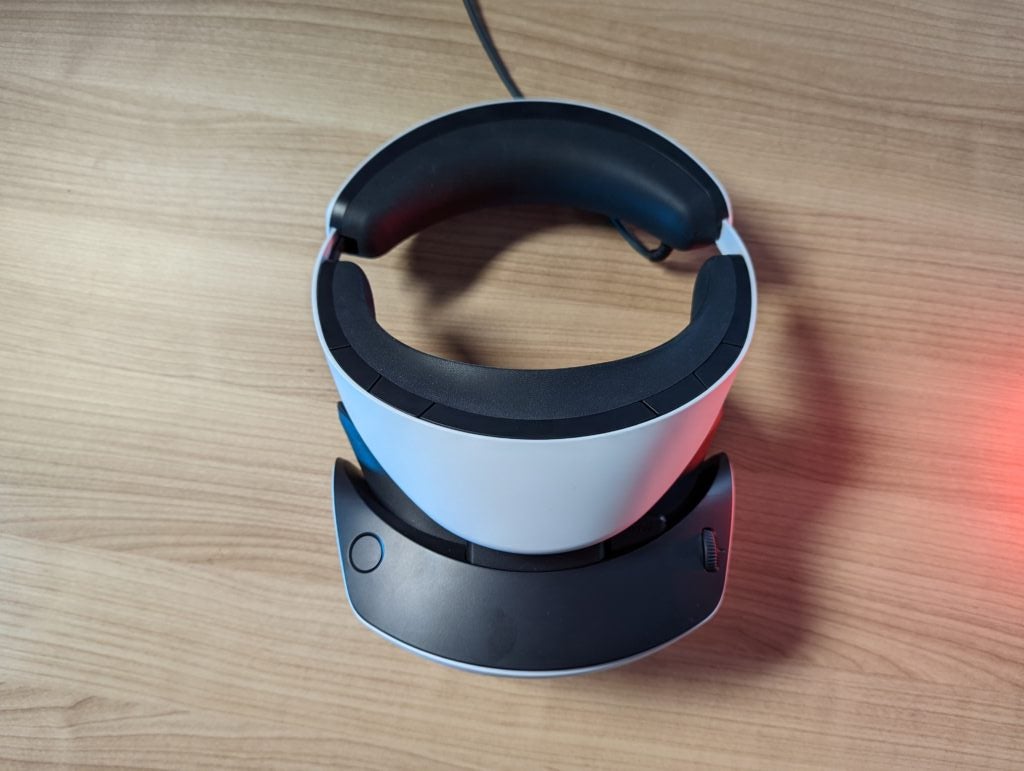
Nevertheless, this streamlined connection is still a massive upgrade on the original PlayStation VR, which I would rarely bother to use just because the setup process was so arduous.
The four cameras on the front of the PSVR 2 headset also allow for inside-out tracking, eradicating the need for external sensors. Tracking performance is excellent, with the headset capable of monitoring my movements no matter how quick or frantic they were – although you will need to make sure your room is well lit for a stable performance.
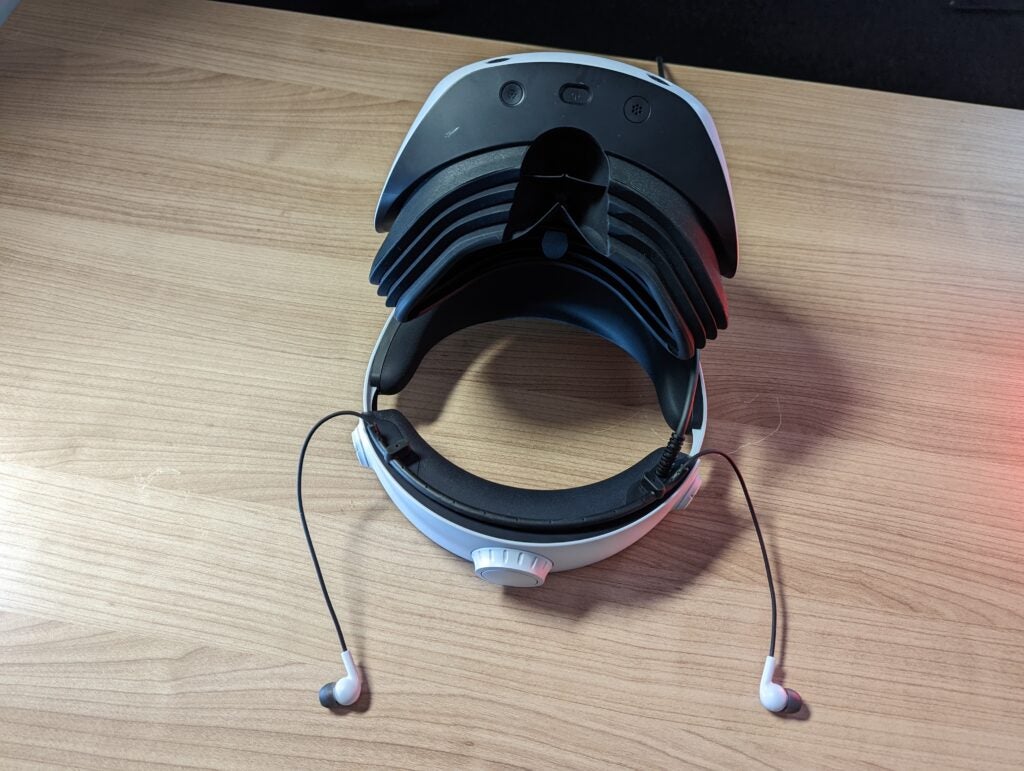
A headphone port can be located on the underside of the band behind your head. This allows you to connect any wired buds you already own, although Sony bundles a pair in the box. They may not offer the absolute best audio quality, but I was happy enough with them, especially since their unique design (which hugs the headband tightly) doesn’t dangle down around your neck. You can of course use any pair of headphones that uses a wireless dongle for the PS5 instead, so the official Pulse 3D wireless headset is fully compatible.
Haptic feedback technology is built into the headset, giving my head a little buzz whenever an in-game dinosaur crashes into the ground, or I discover a collectible in the adorable platform game Moss. I’m a big fan of this feature, with the vibrations proving subtle enough that they don’t cause any discomfort – although you are able to turn this feature off if you prefer.
Controllers
- Controllers allow for more natural hand movements
- Haptic feedback and adaptive triggers improve immersion
- Battery life comes in at 4-and-a-half hours
The Sense controllers offer the most compelling reason to upgrade to the PlayStation VR 2 from the original headset. Sony has clearly taken inspiration from Meta’s Quest Controllers, with a hooped design to ensure pinpoint tracking.
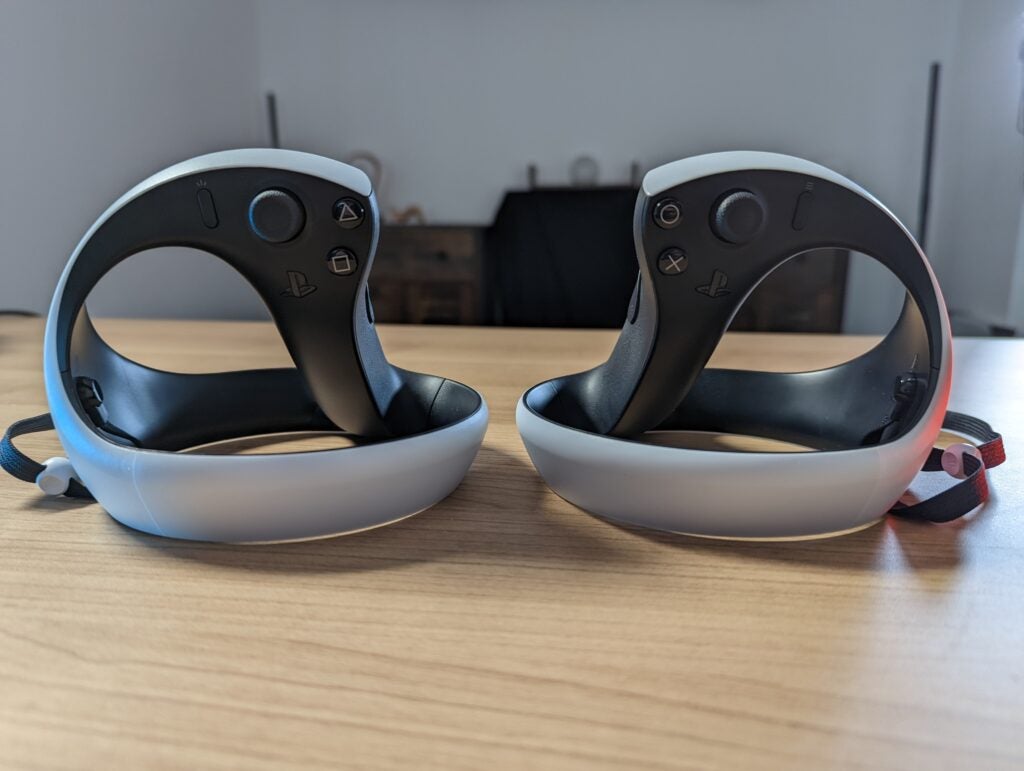
The use of triggers and grip buttons also allows me to mimic real-world actions, whether it’s pulling the string of a bow or slamming a pickaxe into the wall to scale up a mountain.
It also feels far more natural to reach behind my shoulder to grab an arrow from my quiver, rather than simply pressing a button on a classic controller.
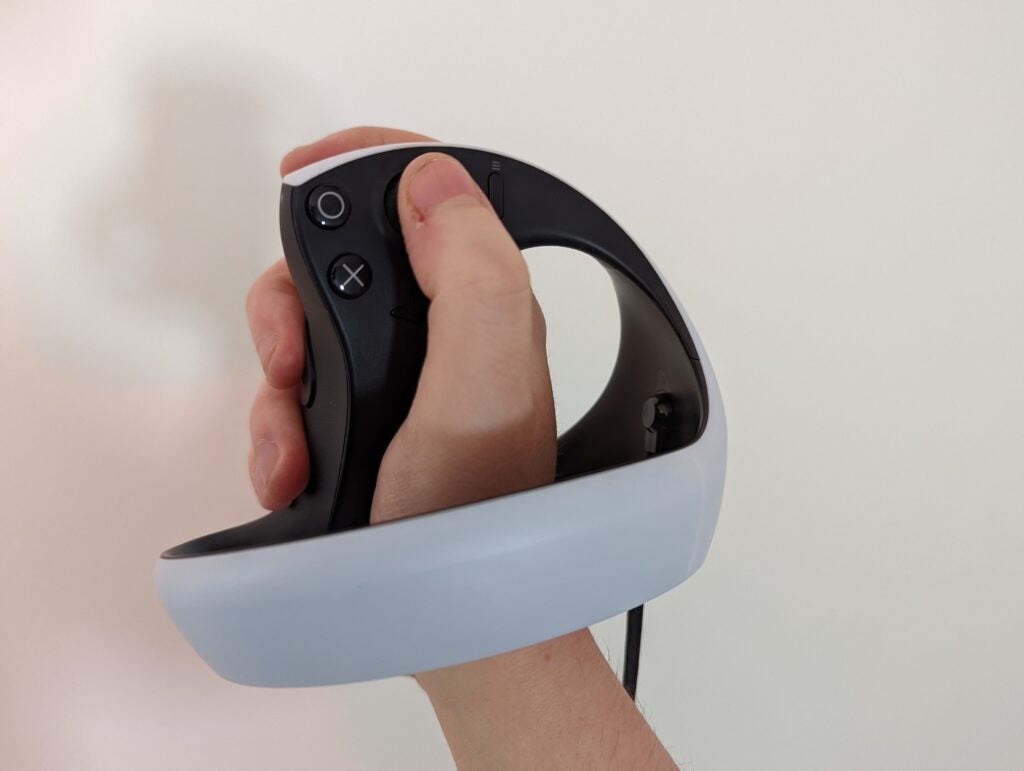
These adaptive triggers are also able to create vibrations and resistance to heighten immersion, such as feeling the tension of a bow when pulling back the string. These features are plucked right out of the PS5’s DualSense controller, and complement the VR format well.
You’ll also find PlayStation’s iconic buttons on the front of the pads, which are able to detect when you’re resting your fingers against them. This makes it possible for you to make various hand shapes in the virtual world, whether it’s a fist or a thumbs up.
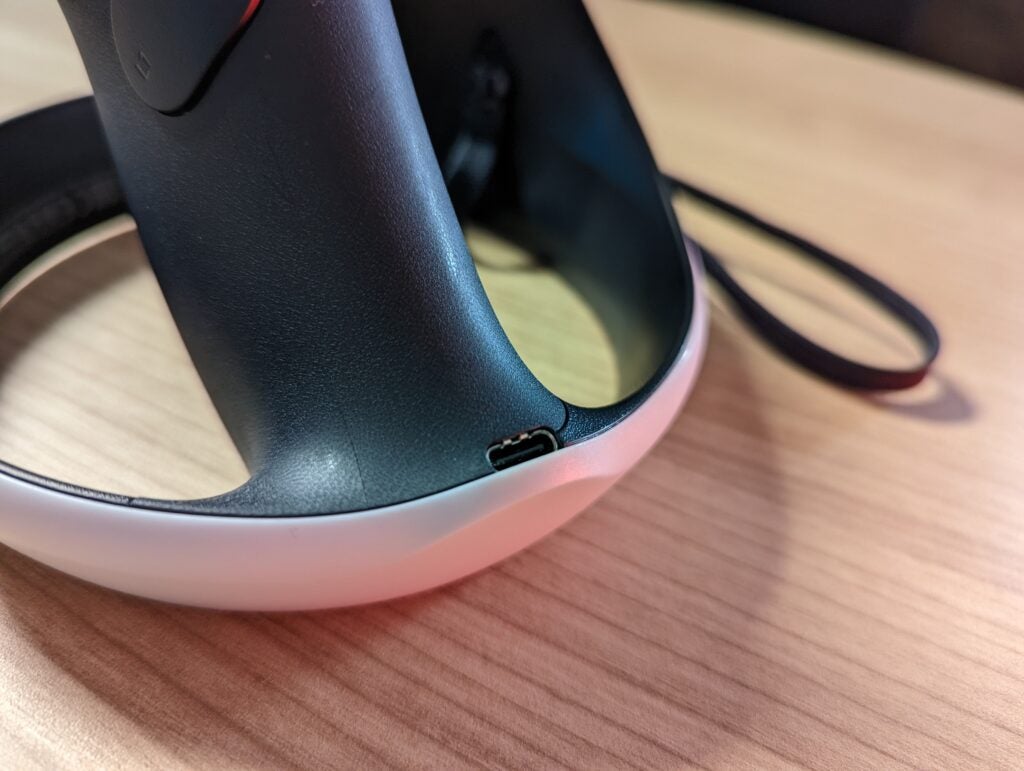
The Sense controllers use a USB-C connection for power delivery, and each lasts around 4 and a half hours of game time on a single charge. That’s not a huge amount of stamina, but I doubt many people would want to be immersed in virtual reality for that long. I recommend purchasing a charging dock, as needing to charge both controllers simultaneously (which takes around 30 minutes) can otherwise be a nuisance.
Performance
- Requires a PS5 to function
- 4K OLED screen looks superb
- Supports up to 120Hz refresh rate
The PlayStation VR 2 lacks an integrated chip, and so needs to be tethered to a PS5 in order to function.
While a wired connection can be irritating, it allowed the headset to leverage the power of the PS5 console and display visually stunning worlds. I’ll never forget the first time stepping into the incredibly detailed jungle of Horizon Call of the Mountain, offering far more gorgeous vistas than what the Meta Quest 2 is capable of.
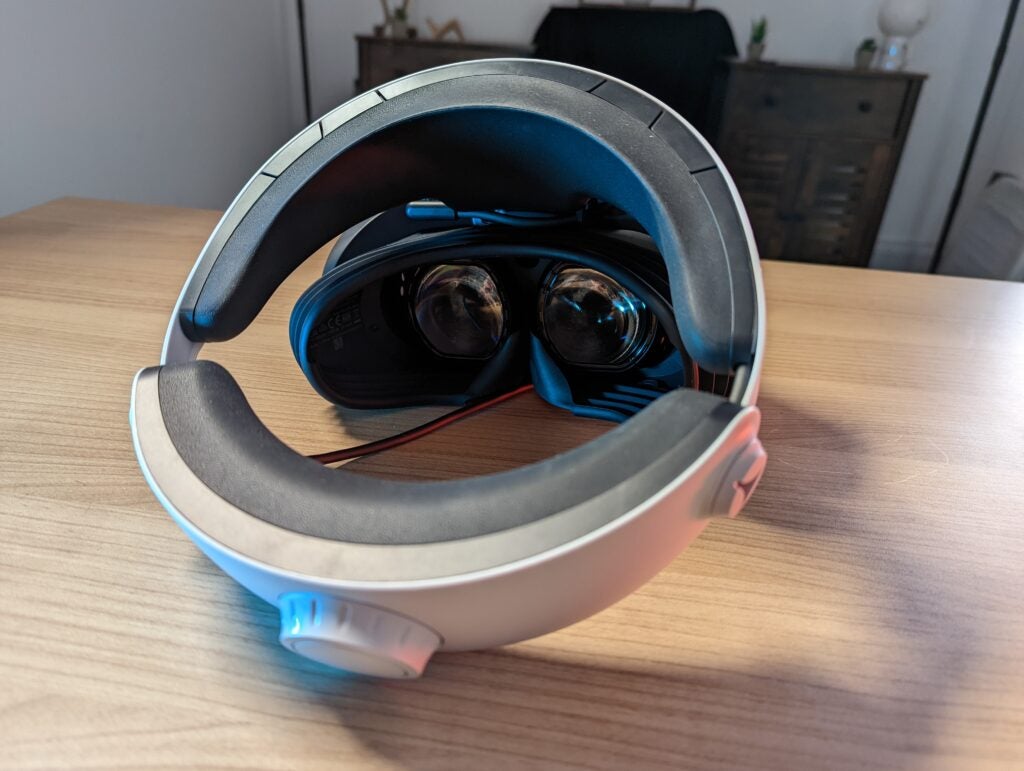
Unfortunately, the vast majority of games in the PS5’s launch lineup are actually ports from the Quest 2 library. This meant experiences such as Star Wars: Tales from the Galaxy’s Edge and Moss: Book II didn’t make use of the PS5’s full power, and so don’t look significantly better than on more affordable headsets.
Games at least look sharper, since the PlayStation VR 2 supports a 4K resolution (2000 x 2040 per eye), although the screen door effect – where you can see a mesh net overlay due to the gap between pixels – is still observable, but only if you focus on it. The OLED display helps to make colours look more vibrant too, whether it was the lush green vegetation or the fiery blast of the Bellowback machine.
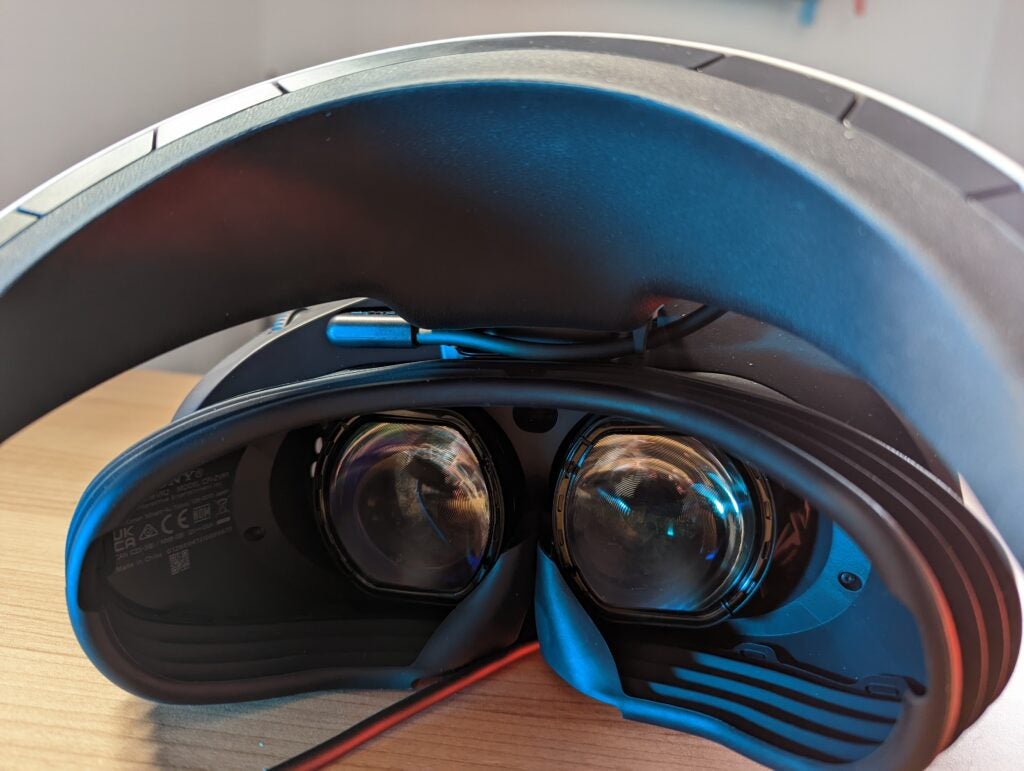
Despite supporting up to a 120Hz refresh rate, I did occasionally notice juddery visual effects from fast moving objects at a distance. The fast-paced dinosaurs in Horizon Call of the Mountain would sometimes not come into clear focus until they stopped moving, although this wasn’t a frequent enough issue to impact the high level of immersion.
Features
- Eye tracking could be better utilised
- Foveated rendering boosts visuals
- Passthrough can be very useful
The PlayStation VR 2 packs in oodles of features. The eye-tracking technology has arguably got the most attention, especially since this is one of the cheapest VR headset to support it so far – the Meta Quest Pro launched at $1499, while the Vive Pro Eye was priced at $999.
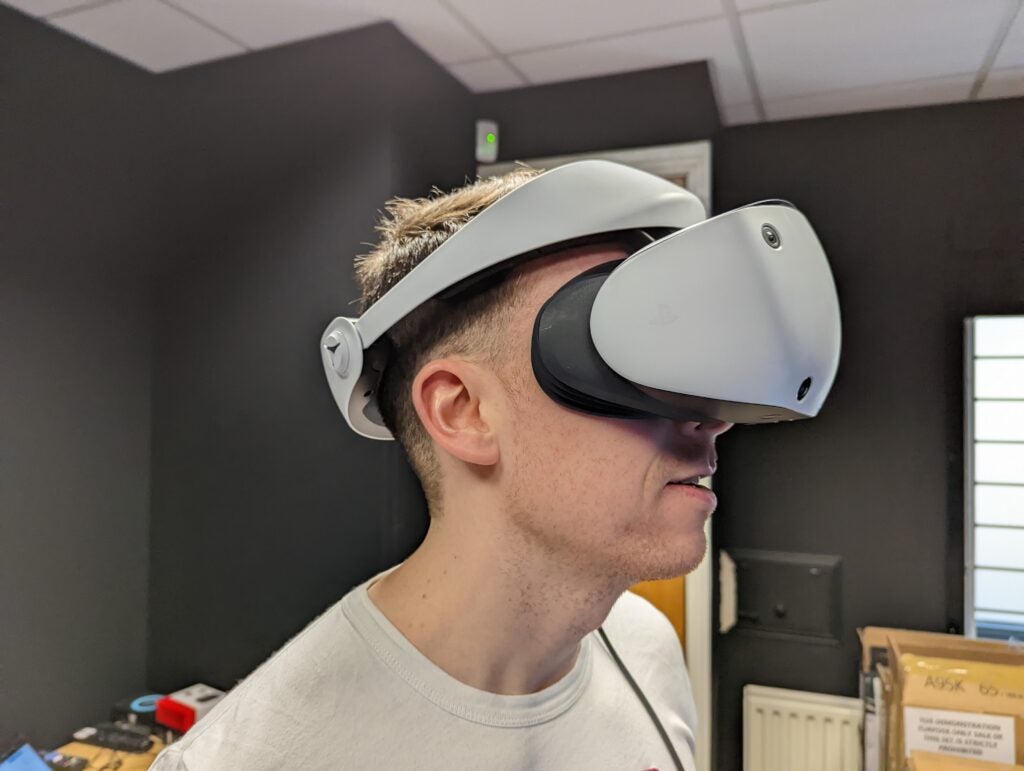
Eye tracking has mostly been used in the enterprise space so far, but Sony clearly thinks it can be used for gaming too. Rez Infinite is confirmed to use it for aiming your weapons at enemies, while EDGE magazine reports that horror game The Dark Pictures: Switchback VR will be able to detect when you blink in order to create some chilling effects.
I was a little disappointed that Horizon Call of the Mountain only used this technology for menu navigation, which shows eye tracking will only reach its full potential if game developers are willing to experiment with it.
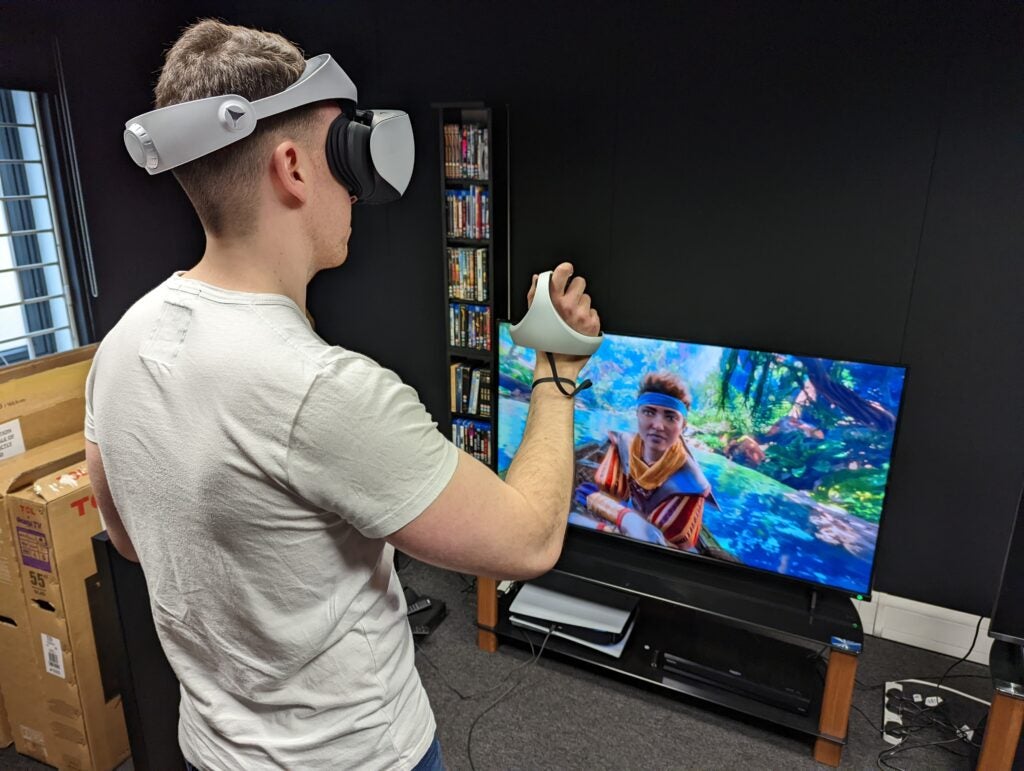
That said, the PlayStation VR 2 does make use of foveated rendering, which uses the eye-tracking technology to improve the visual quality of whichever part of the screen you’re looking at, while simultaneously dialling down the fidelity of your peripheral vision in order to conserve the horsepower of the PS5’s GPU. For that alone, I can see a benefit of having eye tracking, even if it has probably increased the cost of the headset substantially.
The PlayStation VR 2 also has black-and-white passthrough, which conveniently allowed me to see my surroundings whenever I needed to find my controllers. The camera quality isn’t good enough here for mixed reality like with the Meta Quest 3, but I don’t think Sony has much interest in going down that route just yet.
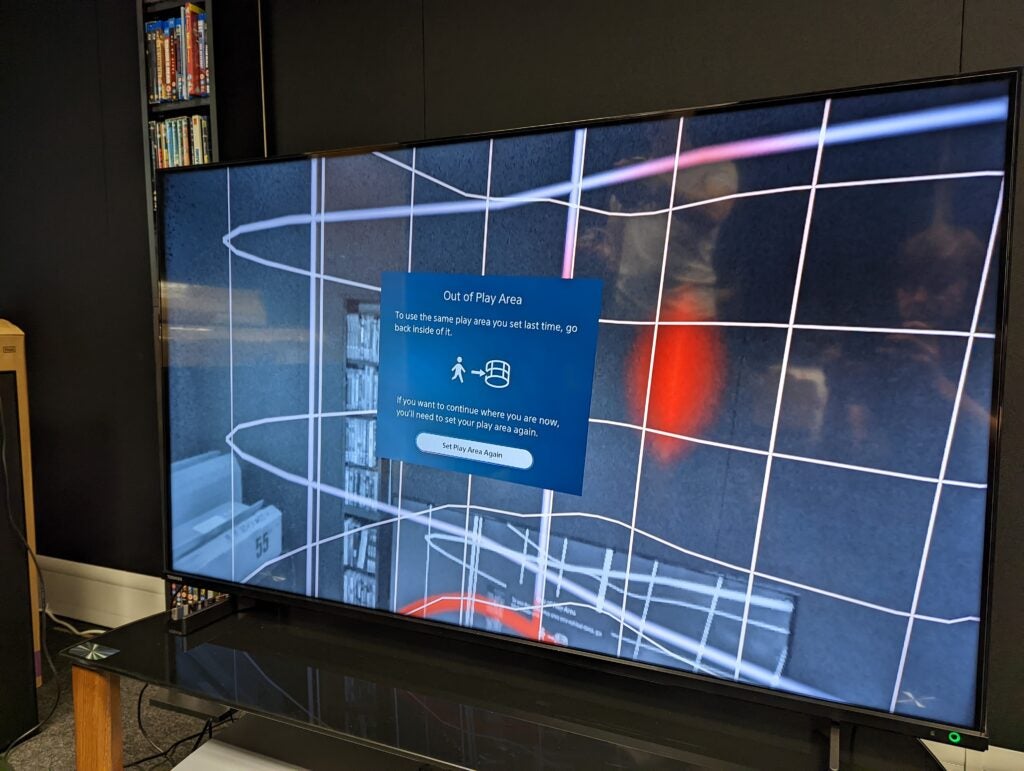
The headset supports sitting, standing and room-scale modes. Setting up your boundaries is really easy too, with virtual walls appearing if you step too close to your television or wall. The PlayStation VR 2 is able to remember the last boundary you created, so you don’t need to set it up every time you turn it on – but if you do need to edit the boundaries, or create a new one from scratch, I found it very easy to do so.
The PlayStation VR 2 can also be used as an alternative display to your TV for standard PS5 games. I played Witcher on the headset, and since it wasn’t designed for VR, it looked like I was watching it on a massive cinema screen – the 4K quality was impressive too. I even watched Rick & Morty on the PSVR 2 via Netflix, although this isn’t the most ideal method of streaming video since the headset eventually started to make my head and neck sore.
Games
- Horizon Call of the Mountain is a fantastic launch game
- Launch lineup made up mostly of Quest ports
- Resident Evil Village and No Man’s Sky will offer support
The lineup of PSVR 2 games was decent at launch. Tales from the Galaxy’s Edge is a basic shooter, but still a fun outing for Star Wars fans. Moss & Moss: Book II are delightfully fun platformers with some clever VR mechanics. And Demeo is a compelling RPG dungeon crawler.
However, these games are ports from other headsets such as the Meta Quest 2, and therefore don’t make the most of the PS5’s graphical power. It’s great to see some VR classics such as Thumber, Pistol Whip and Beat Saber arriving on the platform too, but they’re never going to merit a PlayStation VR 2 purchase alone given the steep price.
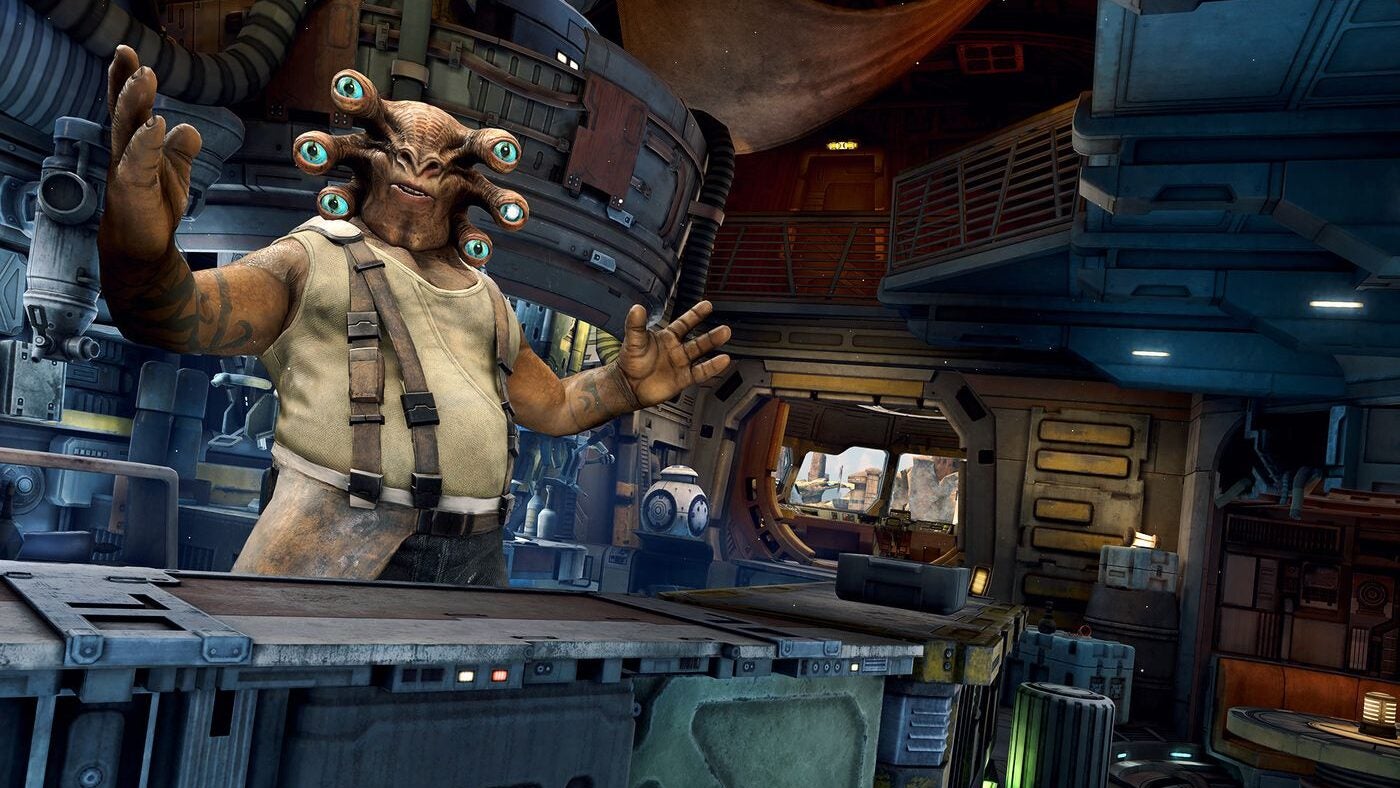
It’s also a big shame that there’s no backwards compatibility here, forcing you to rebuild your library from scratch and making the likes of Astro Bot Rescue Mission inaccessible.
I’m excited to try out the likes of Resident Evil Village and No Man’s Sky, which weren’t available to play during the review programme – but it’s these kinds of games that will most likely be the main attraction on the PlayStation VR 2.
The big star is undoubtedly Horizon Call of the Mountain, which is the best VR game I’ve played since Half-Life Alyx. While most games can be accused of being a shallow arcade experience, Horizon feels like a full-length adventure and shows the high potential of what the PlayStation VR 2 can offer.
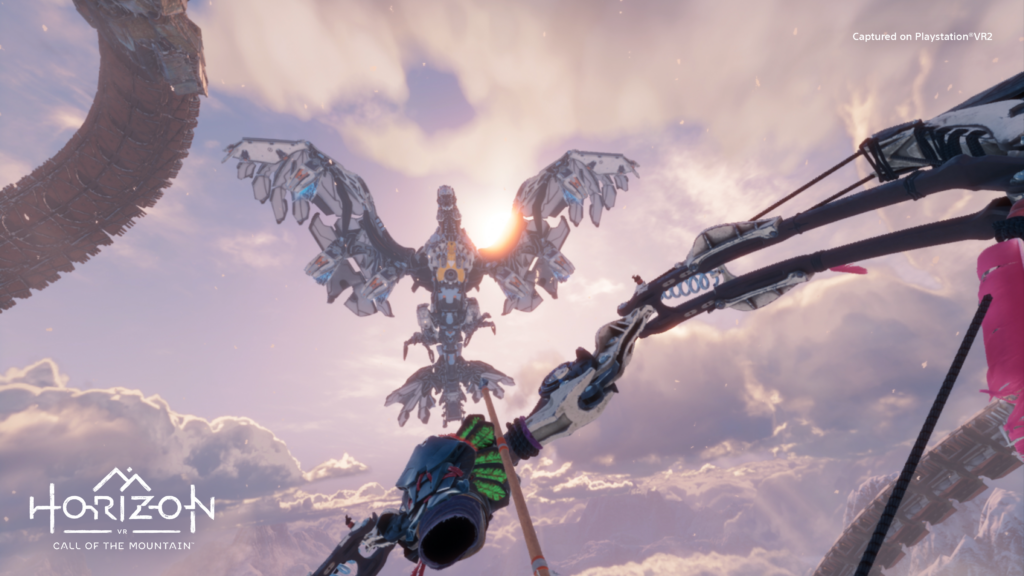
I’m a little worried for the future of the PlayStation VR 2, as now we’re in 2024, the game library doesn’t look much better than at launch. Sony has at least confirmed a few upcoming games such as Behemoth, Tin Hearts and Low-Fi. However, I was hoping the PlayStation VR 2 would see more grand scale exclusives, such as spin-offs for the likes of God of War, The Last of Us, Uncharted, Ratchet and Clank and more.
I’m growing increasingly pessimistic that this will ever change. PlayStation didn’t really supply the original PSVR headset with many first-party games at this scale, so it’s difficult to think it’s going to be different this time around – although I’d love to be proven wrong. Either way, it’s probably worth waiting to see whether more games do arrive before committing yourself to a purchase.
Latest deals
Should you buy it?
You already own a PS5 and want a VR headset
The PlayStation VR 2 makes the most sense for gamers who already own a PS5. I don’t see much point in purchasing a PS5 console for the main purpose of trying out Sony’s new VR headset when there are plenty of great alternatives such as the Meta Quest 2.
You don’t care about PlayStation exclusives:
The PlayStation VR 2 shares a very similar library to the Meta Quest 3, but with first-party games added to the mix such as Horizon Call of the Mountain and Gran Turismo 7. But if you don’t care about these games, or any potential new first-party releases, you’re better off sticking with the Quest.
Final Thoughts
The PlayStation VR 2 is a fantastic VR headset, with all the specs required to deliver wonderfully immersive experiences. The streamlined setup process and more intuitive controllers also make it a massive upgrade on the original headset.
But the PSVR 2’s success will depend heavily on its game library – if PlayStation can keep launching games to the standard of the Horizon Call of the Mountain, then there’s no doubt in my mind that it will become the best VR headset on the market. But now we’re in 2024, there still need to be big improvements made to the game library.
For now, it makes far more sense to opt for the wireless and more affordable Meta Quest 2. And if you’re willing to stretch your budget, the Meta Quest 3 offers an even more versatile experience with the added benefit of mixed reality.
How we test
When testing a VR headset, we make sure to try out a variety of games and apps. We evaluate various aspects, such as the design, screen quality, battery life and the feature set.
We tested a variety of VR games.
We used games and apps to evaluate performance.
FAQs
The PlayStation VR 2 will cost £529.99 in the UK, $549.99 in the US and €600 in Europe.
Yes, the PSVR 2 must be connected to a PS5 to function. It can’t be used solo or with a PC.
You will need a TV when setting the PSVR 2 up for the first time, but you won’t need one after that. I often used the PSVR 2 with my television turned off.
Jargon buster
VR
Virtual reality is the term given to a computer-generated three-dimensional simulation that can be interacted with real-world movement thanks to hardware such as headsets, controllers and gloves.
Verdict
The PlayStation VR 2 has all the specs required to offer wonderfully immersive experiences, but will depend on future first-party PlayStation games in order to be a worthwhile alternative to the more affordable Meta Quest series.
Pros
- Stunning 4K OLED screen
- Sense controllers are huge improvement
- Stylish design and streamlined setup
- Haptic feedback improves immersion
Cons
- No backwards compatability
- More expensive than a PS5
- Can be uncomfortable after extended use
Availability
- UKRRP: £529.99
- USARRP: $549.99
- EuropeRRP: €600
- CanadaRRP: CA$749.99
- AustraliaRRP: AU$879.95
-
High-resolution OLED display:With an OLED display and 2000 x 2040 per eye resolution, the PSVR 2 offers increidble picture quality. -
New Sense controllers:Ergonomic controllers with motion sensors and haptic feedback. -
Requires a PS5 to function:It can’t run indepedently like the Meta Quest 2 and Pico 4.
Introduction
Virtual reality is going from strength to strength, with Meta continuing to make waves and technology giants such as Apple wading into the market. So it should come as no surprise that Sony has decided to launch its very own: the PlayStation VR 2.
This is actually PlayStation’s second attempt at a VR headset, but this time round its packing cutting-edge technology such a 4K OLED display, haptic feedback and eye-tracking technology.
But there’s also a lot more competition these days. The Meta Quest 3 not only flaunts a fantastic gaming performance, but also allows you to make use of mixed reality for a more versatile offering.
With less lifestyle apps available, Sony will really need to double down on its game catalogue to make the PlayStation VR 2 a success. But are there enough games to make the most of the hardware? After months of testing, here’s my verdict.
Design
- Plenty of adjustment option to find the right fit
- Streamlined setup with USB-C cable
- Inside-out tracking works flawlessly
The PlayStation VR 2 looks really snazzy, with a predominantly white design that matches the PS5’s colour scheme. That does unfortunately mean scuff marks are more visible – I already have one at the front of the visor – but there’s no denying this is one of the best looking VR headsets yet.

There are a few small details I really love too, with shiny PlayStation logos found on the sides, and the triangle, circle, X and square symbols hidden on top of the visor.
A lot of care has gone into the design of this headset, making it feel like a luxury device that merits the steep price.

The PlayStation VR 2 features a halo design, with a plastic band snuggly wrapping around my head.
The headband is padded, but it’s not quite thick enough to prevent the plastic band from digging into my forehead after extended play. That said, I still think it’s a better design than the straps on the Meta Quest 2, which can slip out of place fairly easily.

I also found the tight clamp of the PlayStation VR 2 to become uncomfortable after an hour or so of play. I struggled to play for longer than this without taking short breaks, although I assume most people would struggle to be immersed in virtual reality for that long anyway.

You can at least adjust the tightness of the headband by rotating a dial at the rear, as well as moving the front visor forward or backwards, which will be a blessing for those who wear glasses.
You can also adjust the separation of the lenses with an easy-to-reach scroll wheel. It’s great to see Sony providing so many options so you can configure the perfect fit.

The PSVR 2 only requires a single USB-C to plug into the PS5. That means you’re able to start playing immediately, as long as you’ve already finished the eye-tracking setup and created your designated playing space.
But that single cable can still get in the way. I tripped over it a number of times during play, making me pine for more wireless freedom afforded by the Meta Quest 3 and Pico 4. Being tethered to the PS5 also made it more difficult to find a suitable play space for VR, even with the generous 4.5m cable.

Nevertheless, this streamlined connection is still a massive upgrade on the original PlayStation VR, which I would rarely bother to use just because the setup process was so arduous.
The four cameras on the front of the PSVR 2 headset also allow for inside-out tracking, eradicating the need for external sensors. Tracking performance is excellent, with the headset capable of monitoring my movements no matter how quick or frantic they were – although you will need to make sure your room is well lit for a stable performance.

A headphone port can be located on the underside of the band behind your head. This allows you to connect any wired buds you already own, although Sony bundles a pair in the box. They may not offer the absolute best audio quality, but I was happy enough with them, especially since their unique design (which hugs the headband tightly) doesn’t dangle down around your neck. You can of course use any pair of headphones that uses a wireless dongle for the PS5 instead, so the official Pulse 3D wireless headset is fully compatible.
Haptic feedback technology is built into the headset, giving my head a little buzz whenever an in-game dinosaur crashes into the ground, or I discover a collectible in the adorable platform game Moss. I’m a big fan of this feature, with the vibrations proving subtle enough that they don’t cause any discomfort – although you are able to turn this feature off if you prefer.
Controllers
- Controllers allow for more natural hand movements
- Haptic feedback and adaptive triggers improve immersion
- Battery life comes in at 4-and-a-half hours
The Sense controllers offer the most compelling reason to upgrade to the PlayStation VR 2 from the original headset. Sony has clearly taken inspiration from Meta’s Quest Controllers, with a hooped design to ensure pinpoint tracking.

The use of triggers and grip buttons also allows me to mimic real-world actions, whether it’s pulling the string of a bow or slamming a pickaxe into the wall to scale up a mountain.
It also feels far more natural to reach behind my shoulder to grab an arrow from my quiver, rather than simply pressing a button on a classic controller.

These adaptive triggers are also able to create vibrations and resistance to heighten immersion, such as feeling the tension of a bow when pulling back the string. These features are plucked right out of the PS5’s DualSense controller, and complement the VR format well.
You’ll also find PlayStation’s iconic buttons on the front of the pads, which are able to detect when you’re resting your fingers against them. This makes it possible for you to make various hand shapes in the virtual world, whether it’s a fist or a thumbs up.

The Sense controllers use a USB-C connection for power delivery, and each lasts around 4 and a half hours of game time on a single charge. That’s not a huge amount of stamina, but I doubt many people would want to be immersed in virtual reality for that long. I recommend purchasing a charging dock, as needing to charge both controllers simultaneously (which takes around 30 minutes) can otherwise be a nuisance.
Performance
- Requires a PS5 to function
- 4K OLED screen looks superb
- Supports up to 120Hz refresh rate
The PlayStation VR 2 lacks an integrated chip, and so needs to be tethered to a PS5 in order to function.
While a wired connection can be irritating, it allowed the headset to leverage the power of the PS5 console and display visually stunning worlds. I’ll never forget the first time stepping into the incredibly detailed jungle of Horizon Call of the Mountain, offering far more gorgeous vistas than what the Meta Quest 2 is capable of.

Unfortunately, the vast majority of games in the PS5’s launch lineup are actually ports from the Quest 2 library. This meant experiences such as Star Wars: Tales from the Galaxy’s Edge and Moss: Book II didn’t make use of the PS5’s full power, and so don’t look significantly better than on more affordable headsets.
Games at least look sharper, since the PlayStation VR 2 supports a 4K resolution (2000 x 2040 per eye), although the screen door effect – where you can see a mesh net overlay due to the gap between pixels – is still observable, but only if you focus on it. The OLED display helps to make colours look more vibrant too, whether it was the lush green vegetation or the fiery blast of the Bellowback machine.

Despite supporting up to a 120Hz refresh rate, I did occasionally notice juddery visual effects from fast moving objects at a distance. The fast-paced dinosaurs in Horizon Call of the Mountain would sometimes not come into clear focus until they stopped moving, although this wasn’t a frequent enough issue to impact the high level of immersion.
Features
- Eye tracking could be better utilised
- Foveated rendering boosts visuals
- Passthrough can be very useful
The PlayStation VR 2 packs in oodles of features. The eye-tracking technology has arguably got the most attention, especially since this is one of the cheapest VR headset to support it so far – the Meta Quest Pro launched at $1499, while the Vive Pro Eye was priced at $999.

Eye tracking has mostly been used in the enterprise space so far, but Sony clearly thinks it can be used for gaming too. Rez Infinite is confirmed to use it for aiming your weapons at enemies, while EDGE magazine reports that horror game The Dark Pictures: Switchback VR will be able to detect when you blink in order to create some chilling effects.
I was a little disappointed that Horizon Call of the Mountain only used this technology for menu navigation, which shows eye tracking will only reach its full potential if game developers are willing to experiment with it.

That said, the PlayStation VR 2 does make use of foveated rendering, which uses the eye-tracking technology to improve the visual quality of whichever part of the screen you’re looking at, while simultaneously dialling down the fidelity of your peripheral vision in order to conserve the horsepower of the PS5’s GPU. For that alone, I can see a benefit of having eye tracking, even if it has probably increased the cost of the headset substantially.
The PlayStation VR 2 also has black-and-white passthrough, which conveniently allowed me to see my surroundings whenever I needed to find my controllers. The camera quality isn’t good enough here for mixed reality like with the Meta Quest 3, but I don’t think Sony has much interest in going down that route just yet.

The headset supports sitting, standing and room-scale modes. Setting up your boundaries is really easy too, with virtual walls appearing if you step too close to your television or wall. The PlayStation VR 2 is able to remember the last boundary you created, so you don’t need to set it up every time you turn it on – but if you do need to edit the boundaries, or create a new one from scratch, I found it very easy to do so.
The PlayStation VR 2 can also be used as an alternative display to your TV for standard PS5 games. I played Witcher on the headset, and since it wasn’t designed for VR, it looked like I was watching it on a massive cinema screen – the 4K quality was impressive too. I even watched Rick & Morty on the PSVR 2 via Netflix, although this isn’t the most ideal method of streaming video since the headset eventually started to make my head and neck sore.
Games
- Horizon Call of the Mountain is a fantastic launch game
- Launch lineup made up mostly of Quest ports
- Resident Evil Village and No Man’s Sky will offer support
The lineup of PSVR 2 games was decent at launch. Tales from the Galaxy’s Edge is a basic shooter, but still a fun outing for Star Wars fans. Moss & Moss: Book II are delightfully fun platformers with some clever VR mechanics. And Demeo is a compelling RPG dungeon crawler.
However, these games are ports from other headsets such as the Meta Quest 2, and therefore don’t make the most of the PS5’s graphical power. It’s great to see some VR classics such as Thumber, Pistol Whip and Beat Saber arriving on the platform too, but they’re never going to merit a PlayStation VR 2 purchase alone given the steep price.

It’s also a big shame that there’s no backwards compatibility here, forcing you to rebuild your library from scratch and making the likes of Astro Bot Rescue Mission inaccessible.
I’m excited to try out the likes of Resident Evil Village and No Man’s Sky, which weren’t available to play during the review programme – but it’s these kinds of games that will most likely be the main attraction on the PlayStation VR 2.
The big star is undoubtedly Horizon Call of the Mountain, which is the best VR game I’ve played since Half-Life Alyx. While most games can be accused of being a shallow arcade experience, Horizon feels like a full-length adventure and shows the high potential of what the PlayStation VR 2 can offer.

I’m a little worried for the future of the PlayStation VR 2, as now we’re in 2024, the game library doesn’t look much better than at launch. Sony has at least confirmed a few upcoming games such as Behemoth, Tin Hearts and Low-Fi. However, I was hoping the PlayStation VR 2 would see more grand scale exclusives, such as spin-offs for the likes of God of War, The Last of Us, Uncharted, Ratchet and Clank and more.
I’m growing increasingly pessimistic that this will ever change. PlayStation didn’t really supply the original PSVR headset with many first-party games at this scale, so it’s difficult to think it’s going to be different this time around – although I’d love to be proven wrong. Either way, it’s probably worth waiting to see whether more games do arrive before committing yourself to a purchase.
Latest deals
Should you buy it?
You already own a PS5 and want a VR headset
The PlayStation VR 2 makes the most sense for gamers who already own a PS5. I don’t see much point in purchasing a PS5 console for the main purpose of trying out Sony’s new VR headset when there are plenty of great alternatives such as the Meta Quest 2.
You don’t care about PlayStation exclusives:
The PlayStation VR 2 shares a very similar library to the Meta Quest 3, but with first-party games added to the mix such as Horizon Call of the Mountain and Gran Turismo 7. But if you don’t care about these games, or any potential new first-party releases, you’re better off sticking with the Quest.
Final Thoughts
The PlayStation VR 2 is a fantastic VR headset, with all the specs required to deliver wonderfully immersive experiences. The streamlined setup process and more intuitive controllers also make it a massive upgrade on the original headset.
But the PSVR 2’s success will depend heavily on its game library – if PlayStation can keep launching games to the standard of the Horizon Call of the Mountain, then there’s no doubt in my mind that it will become the best VR headset on the market. But now we’re in 2024, there still need to be big improvements made to the game library.
For now, it makes far more sense to opt for the wireless and more affordable Meta Quest 2. And if you’re willing to stretch your budget, the Meta Quest 3 offers an even more versatile experience with the added benefit of mixed reality.
How we test
When testing a VR headset, we make sure to try out a variety of games and apps. We evaluate various aspects, such as the design, screen quality, battery life and the feature set.
We tested a variety of VR games.
We used games and apps to evaluate performance.
FAQs
The PlayStation VR 2 will cost £529.99 in the UK, $549.99 in the US and €600 in Europe.
Yes, the PSVR 2 must be connected to a PS5 to function. It can’t be used solo or with a PC.
You will need a TV when setting the PSVR 2 up for the first time, but you won’t need one after that. I often used the PSVR 2 with my television turned off.
Jargon buster
VR
Virtual reality is the term given to a computer-generated three-dimensional simulation that can be interacted with real-world movement thanks to hardware such as headsets, controllers and gloves.

